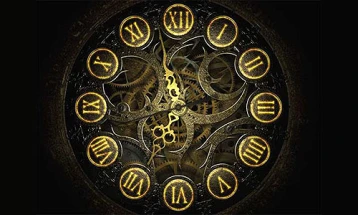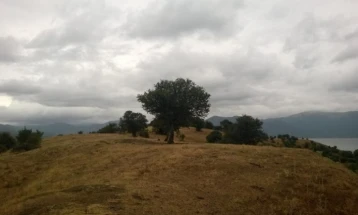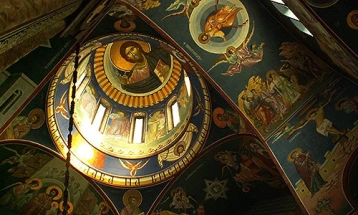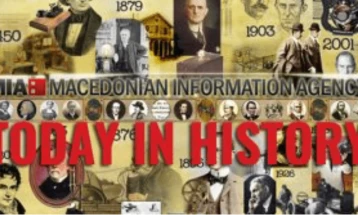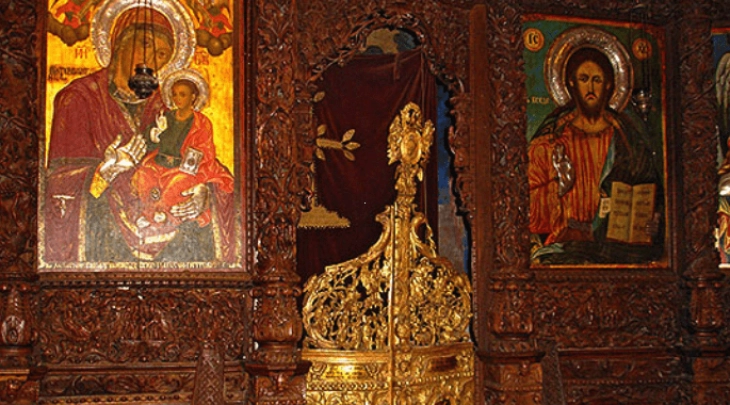
14 August 2022 (MIA)
Macedonian Orthodox Church Calendar
The Seven Holy Maccabean Martyrs: Habim, Antonin, Guriah, Eleazar, Eusebon, Hadim (Halim) and Marcellus, their mother Solomonia and their teacher Eleazar
They suffered in the year 166 before the Birth of Christ under the impious Syrian emperor Antiochos Epiphanos. Adhering to an Hellenistic cult, Antiochos Epiphanos introduced pagan customs at Jerusalem and throughout all Judea. He desecrated the Temple of the Lord, putting there in a statue of the pagan god Zeus, and forcing the Jews to worship it. Many of them then fell away from the True God. But there were also those, who were deeply sorrowed by the downfall of the people of God and who continued to believe in the coming arrival of the Saviour. A ninety year old elder – the law-teacher Eleazar, was brought to trial for his adherence to the Mosaic Law, and he steadfastly underwent tortures and died at Jerusalem. Bravery was likewise shown by the disciples of Saint Eleazar – the Seven Maccabean Brothers and their mother Solomonia. They were brought to trial in Antioch by the emperor Antiochos Epiphanos. They fearlessly acknowledged themselves as followers of the True God, and refused to offer sacrifice to the pagan gods. The eldest of the lads, having been first to answer the emperor in the name of all seven brothers, was given over to fierce tortures in sight of his remaining brothers and their mother. The next five brothers one after the other underwent these tortures. There remained the seventh brother, the very youngest. Antiochos suggested to Saint Solomonia to urge the lad into renunciation, so that at least this final son would remain for her. But the brave mother encouraged him also in the confession of the True God. The lad resolutely ignored the entreaty of the emperor and likewise firmly underwent the tortures, just like his older brothers. After the death of all her seven children, Saint Solomonia, standing over their bodies, raised up her hands in prayer to God and died. The Martyrs Act of the holy Seven Maccabean Brothers inspired Judas Maccabee, and he led the revolt against Antiochos Epiphanos with the help of God gaining the victory, and then purifying the Jerusalem Temple of idols. All these events are related in the Book of Second Maccabees, which is included within the Bible. Sermons of laudation to the holy Maccabean Martyrs were offered by various fathers of the Church — Sainted Cyprian of Carthage, Sainted Ambrose of Mediolanum (Milan), Sainted Gregory Nazianzus and Sainted John Chrysostomos.
Catholic Calendar
Maximilian Kolbe
Second of three sons born to a poor but pious Catholic family in Russian occupied Poland. His parents, both Franciscan lay tertiaries, worked at home as weavers. His father, Julius, later ran a religious book store, then enlisted in Pilsudski’s army, fought for Polish independence from Russia, and was hanged by the Russians as a traitor in 1914. His mother, Marianne Dabrowska, later became a Benedictine nun. His brother Alphonse became a priest. Raymond was known as a mischievous child, sometimes considered wild, and a trial to his parents. However, in 1906 at Pabianice, at age twelve and around the time of his first Communion, he received a vision of the Virgin Mary that changed his life. Studied philosophy at the Jesuit Gregorian College in Rome from 1912 to 1915, and theology at the Franciscan Collegio Serafico in Rome from 1915 to 1919. On October 16, 1917, while still in seminary, he and six friends founded the Immaculata Movement (Militia Immaculatae, Crusade of Mary Immaculate) devoted to the conversion of sinners, opposition to freemasonry (which was extremely anti-Catholic at the time), spread of the Miraculous Medal (which they wore as their habit), and devotion to Our Lady and the path to Christ. Stricken with tuberculosis which nearly killed him, and left him in frail in health the rest of his life. Ordained on April 28, 1918 in Rome at age 24. Received his Doctor of Theology in 1922; his insights into Marian theology echo today through their influence on Vatican II. Maximilian returned to Poland in 1919 to teach history in the Crakow seminary. Polish Prince Jan Drucko-Lubecki gave him land at Teresin near Warsaw. There he founded a new monastery of Niepokalanow, the City of the Immaculate. Not content with his work in Poland, Maximilian and four brothers left for Japan in 1930. Within a month of their arrival, penniless and knowing no Japanese, Maximilian was printing a Japanese version of the Knight; the magazine, Seibo no Kishi grew to a circulation of 65,000 by 1936. In 1931 he founded a monastery in Nagasaki, Japan comparable to Niepokalanow. It survived the war, including the nuclear bombing, and serves today as a center of Franciscan work in Japan. In mid-1932 he left Japan for Malabar, India where he founded a third Niepokalanow house. However, due to a lack of manpower, it did not survive. Arrested with several of his brothers in 1939 following the Nazi invasion of Poland. Others at the monastery were briefly exiled, but the prisoners were released in December 1939, and the men returned to their work. Back at Niepokalanow he continued his priestly ministry, The brothers housed 3,000 Polish refugees, two-thirds of whom were Jewish, and continued their publication work, including materials considered anti-Nazi. For this work the presses were shut down, the congregation suppressed, the brothers dispersed, and Maximilian was imprisoned in Pawiak prison, Warsaw, in 1941. On May 28 he was transferred to Auschwitz and branded as prisoner 16670. He was assigned to a special work group staffed by priests and supervised by especially vicious and abusive guards. His calm dedication to the faith brought him the worst jobs available, and more beatings than anyone else. At one point he was beaten, lashed, and left for dead. The prisoners managed to smuggle him into the camp hospital where he spent his recovery time hearing confessions. When he returned to the camp, Maximilian ministered to other prisoners, including conducting Mass and delivering communion using smuggled bread and wine. In July 1941 there was an escape from the camp. Camp protocol, designed to make the prisoners guard each other, required that ten men be slaughtered in retribution for each escaped prisoner. Francis Gajowniczek, a married man with young children was chosen to die for the escape. Maximilian volunteered to take his place, and died as he had always wished – in service.
